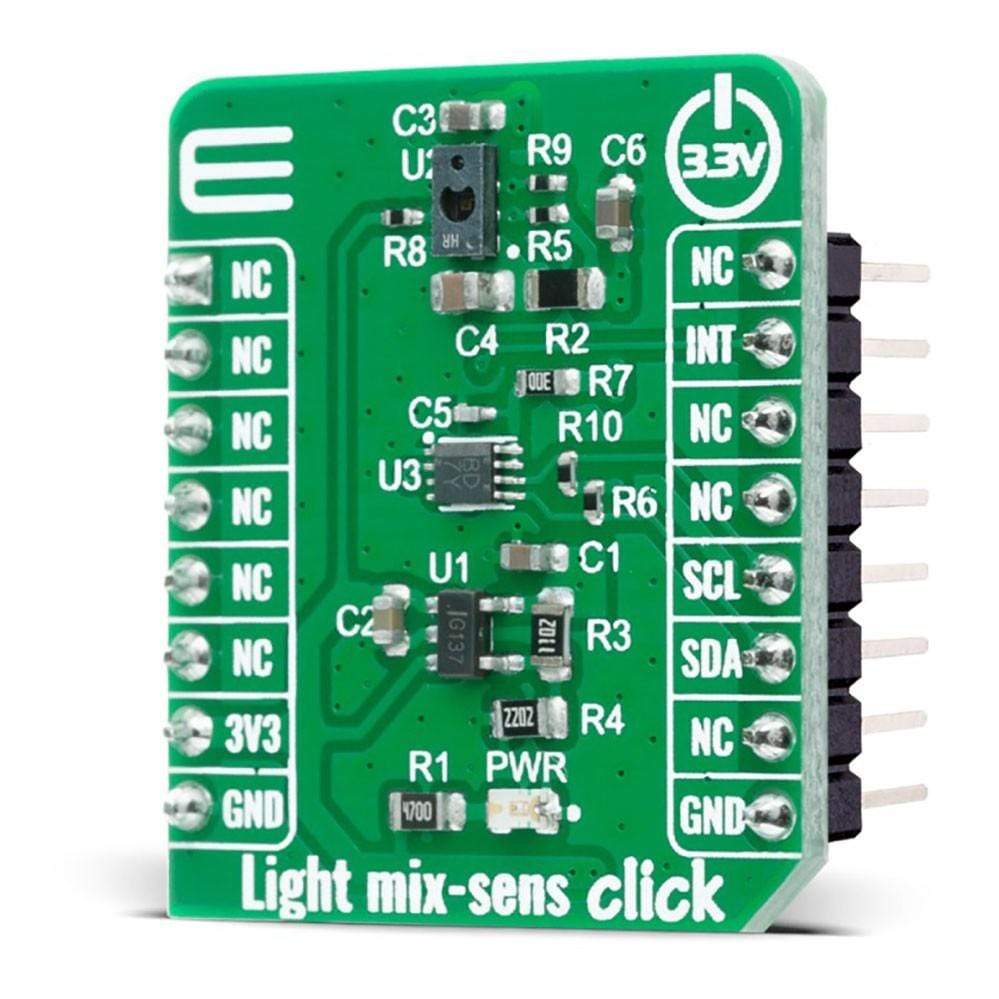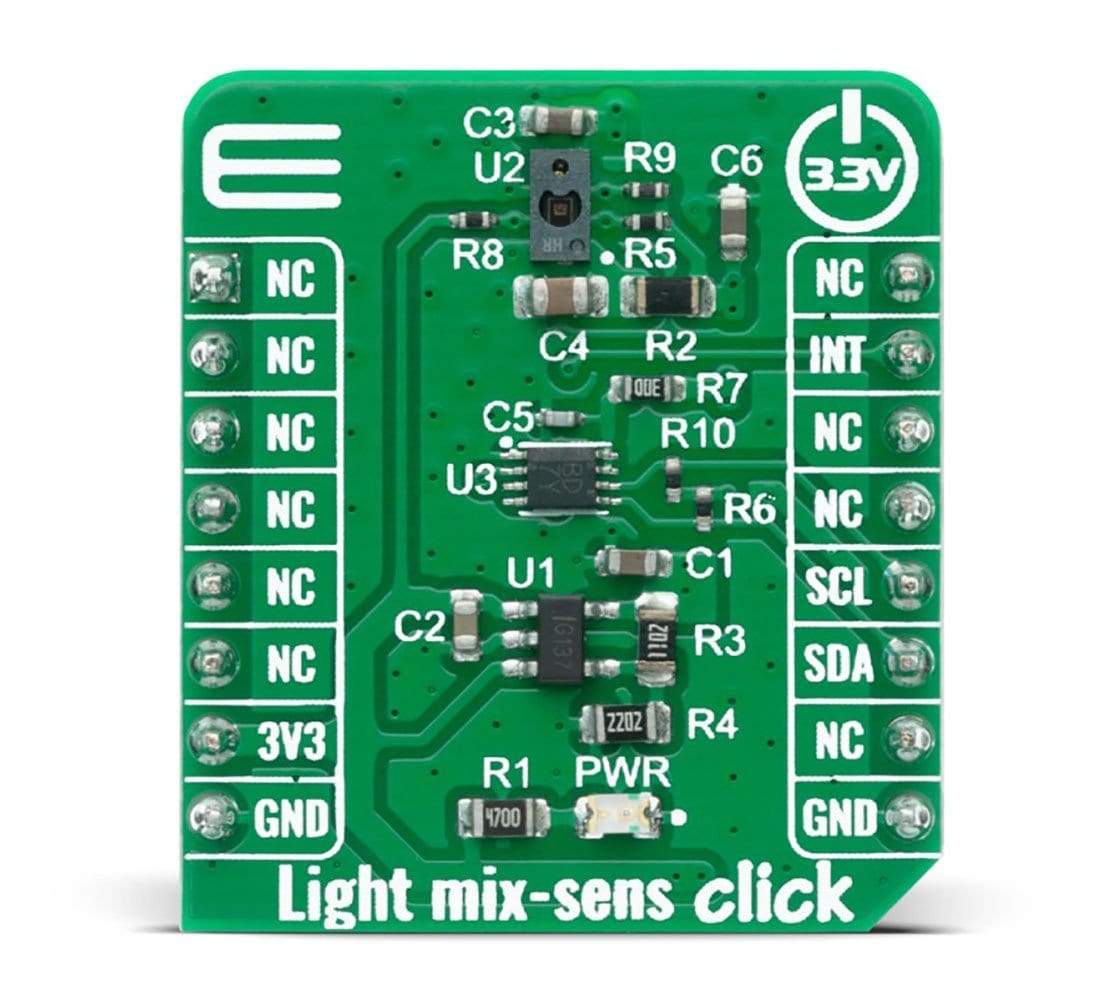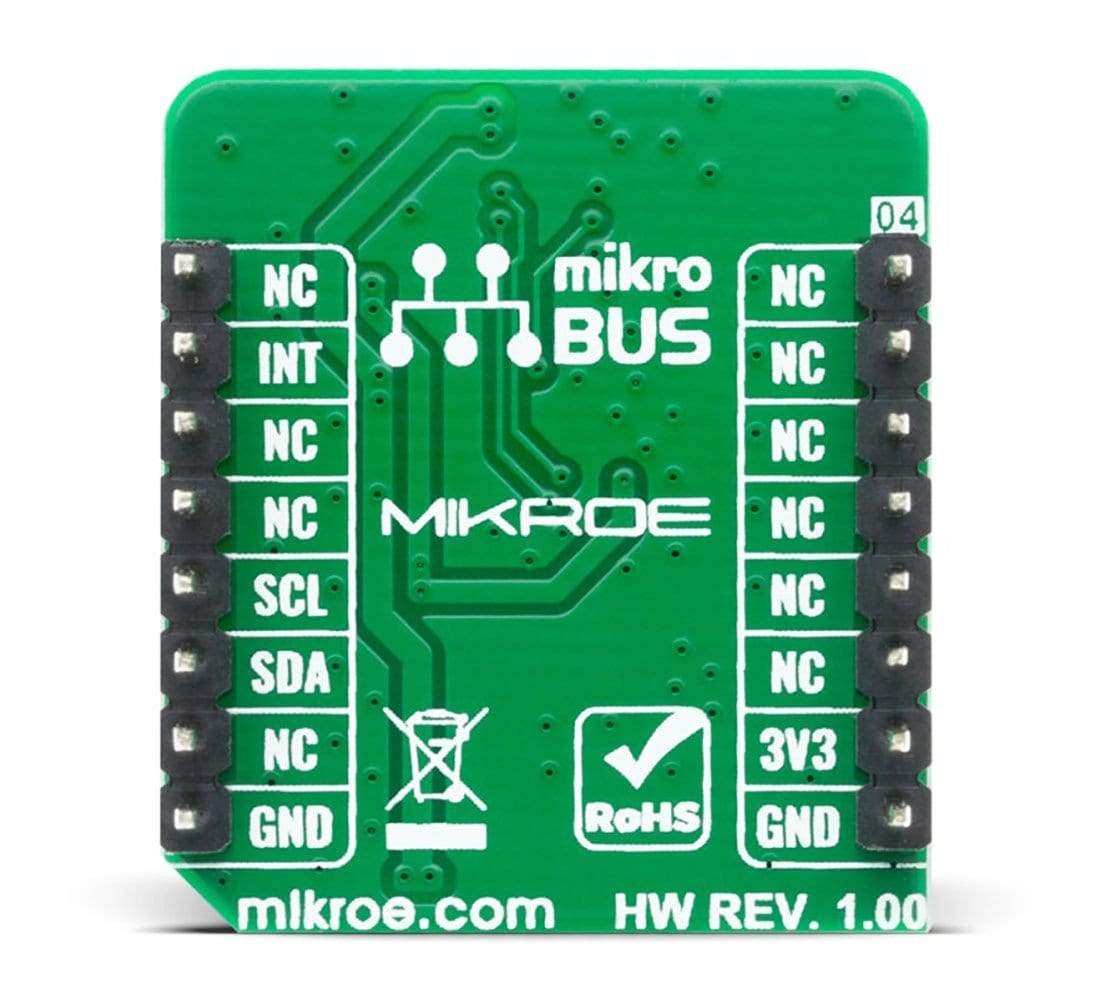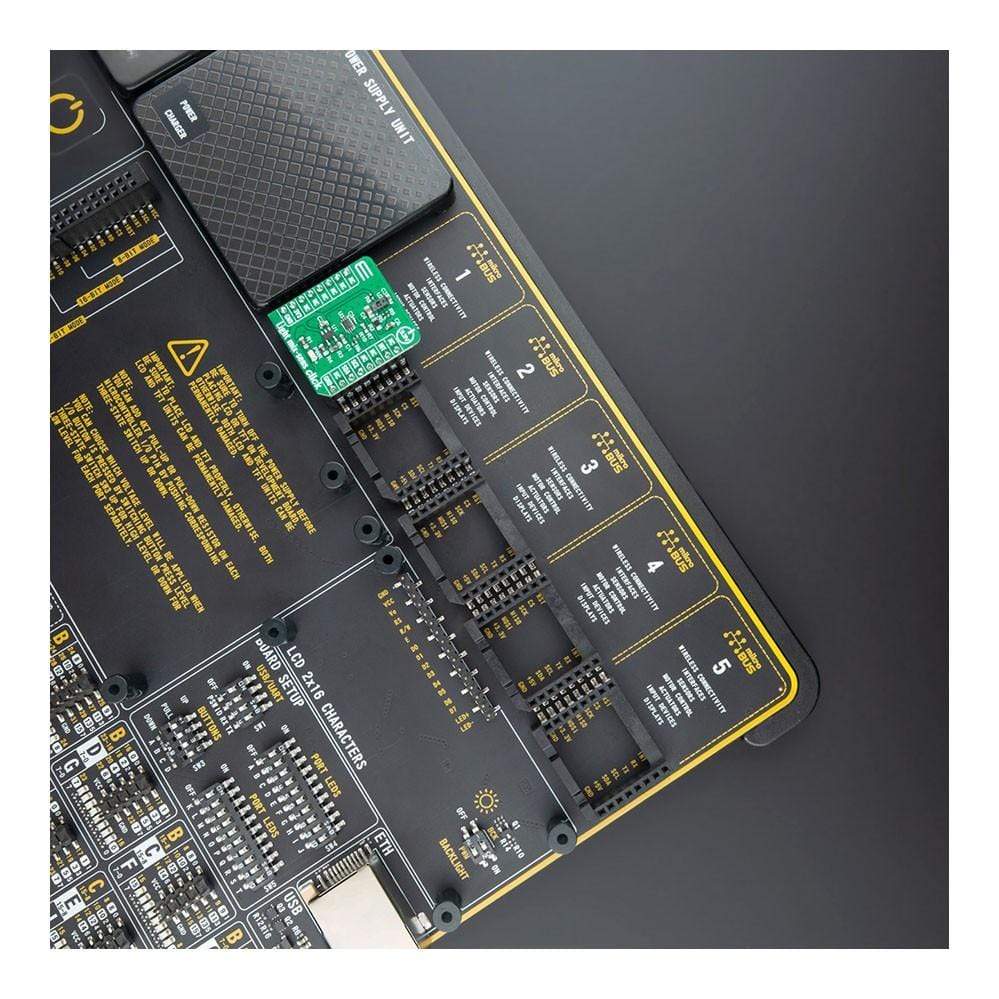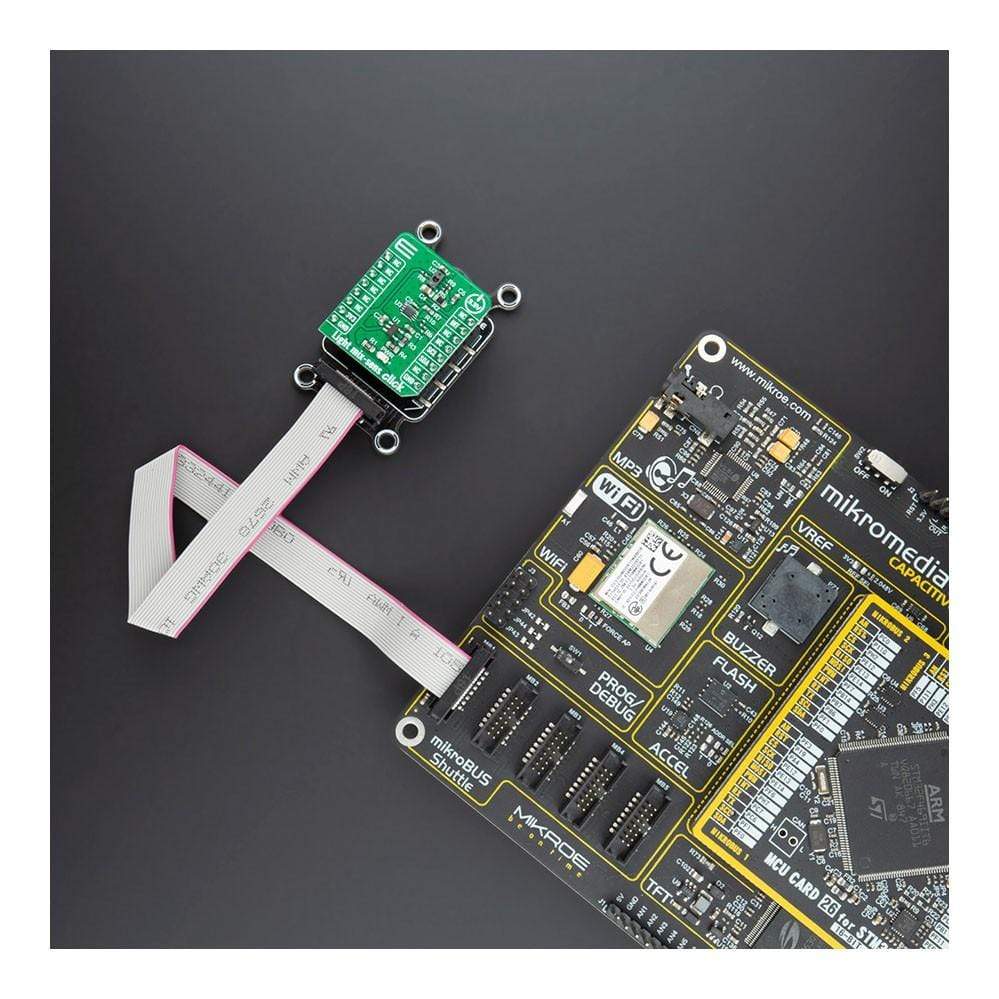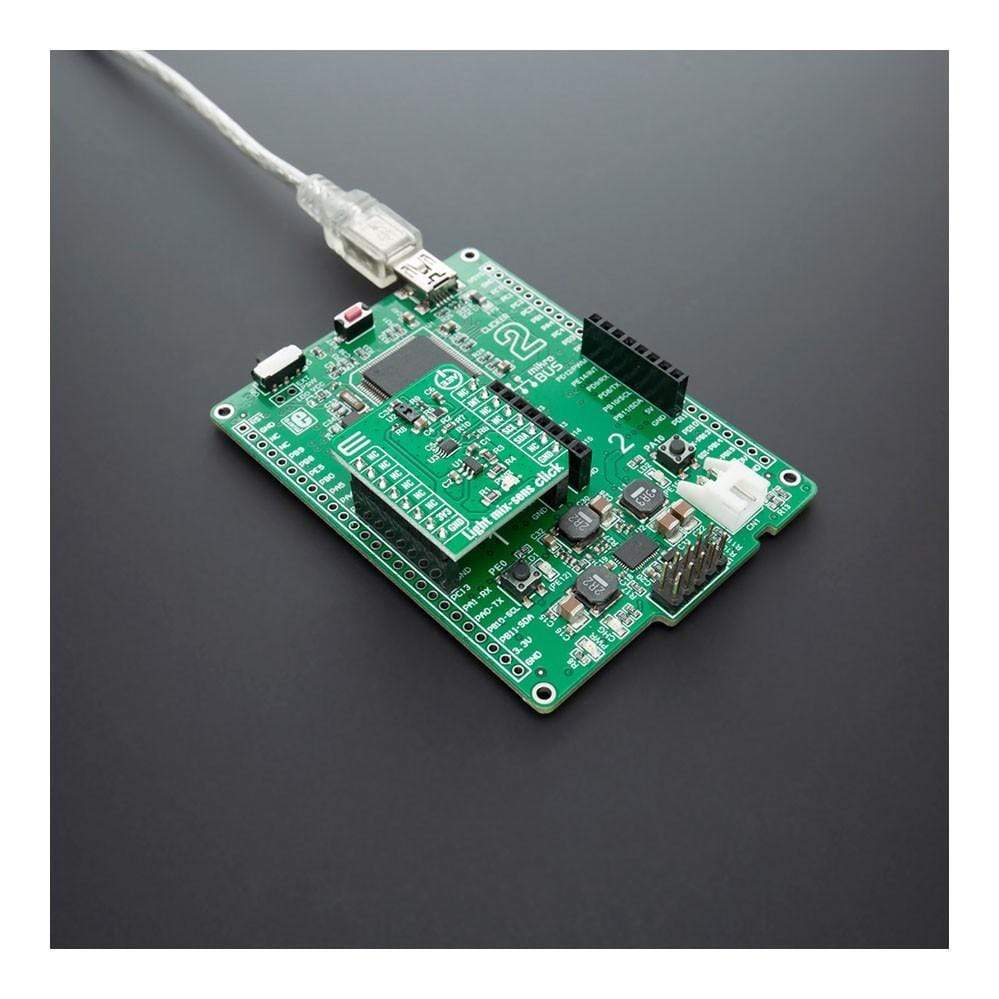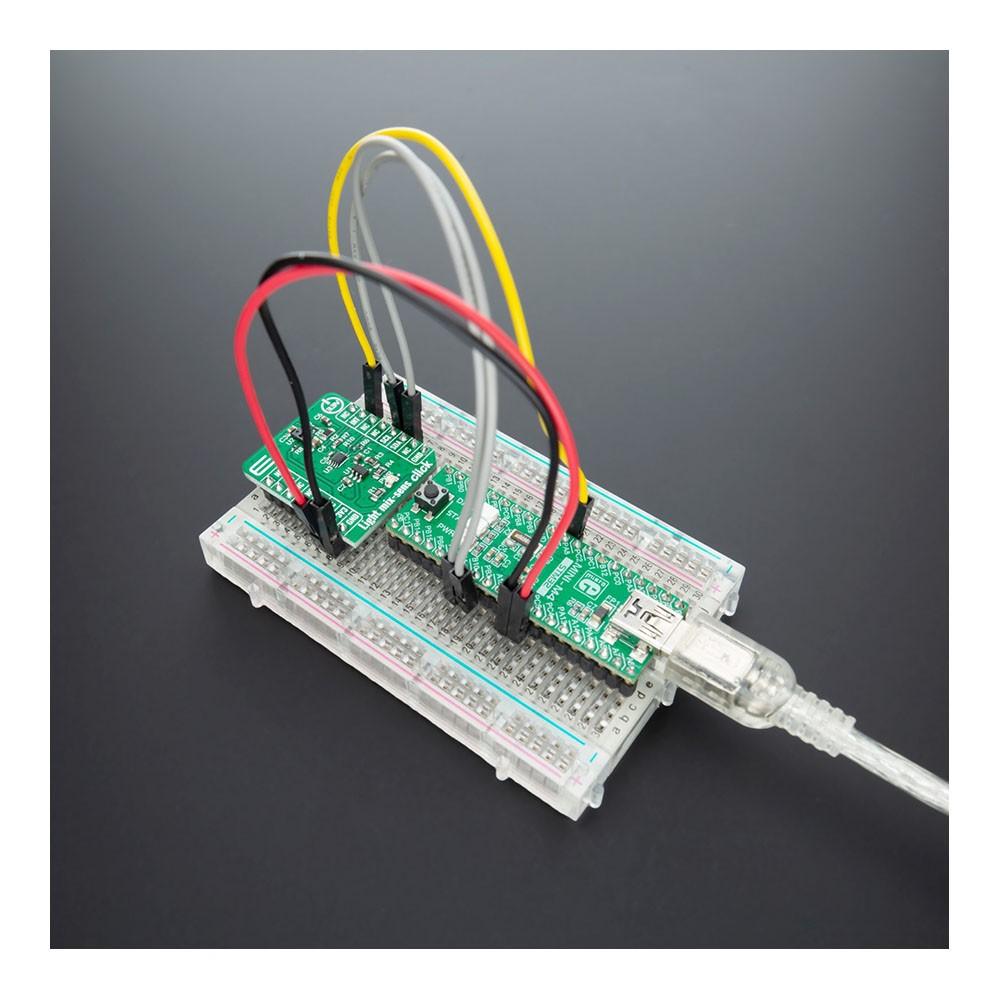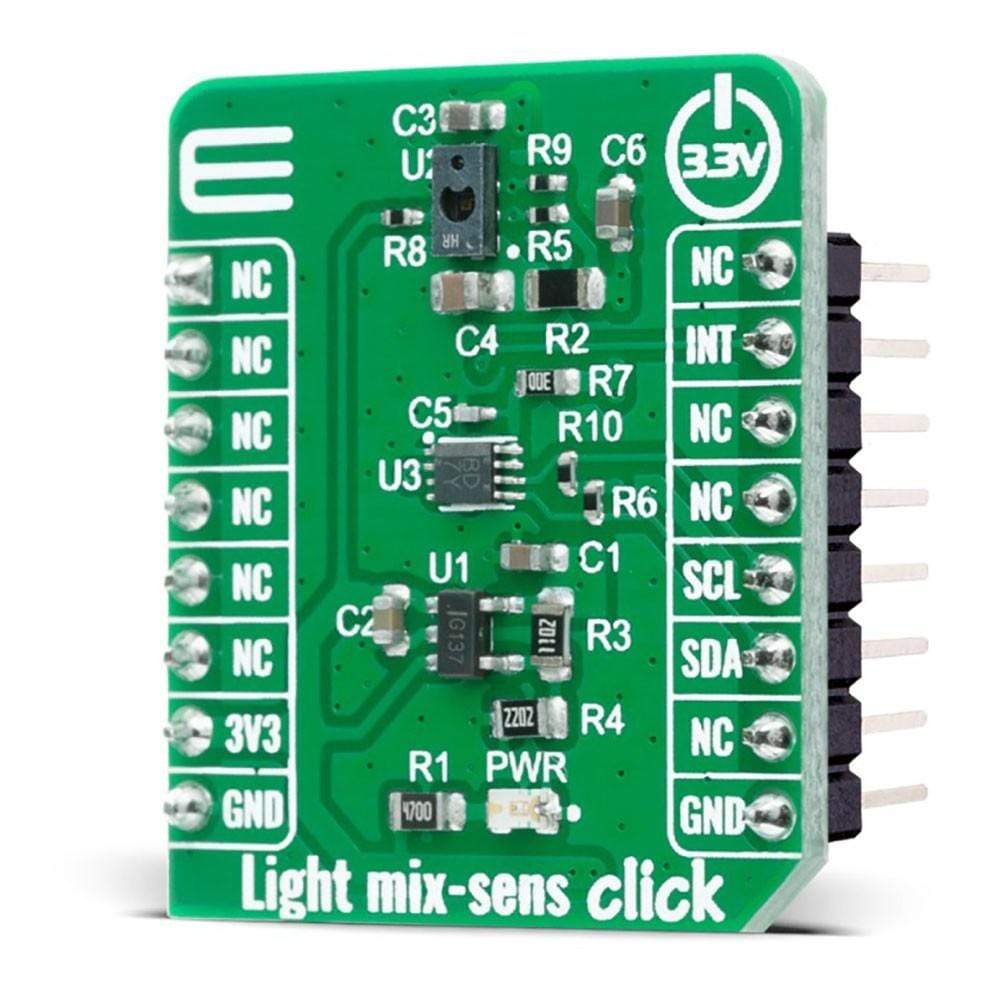
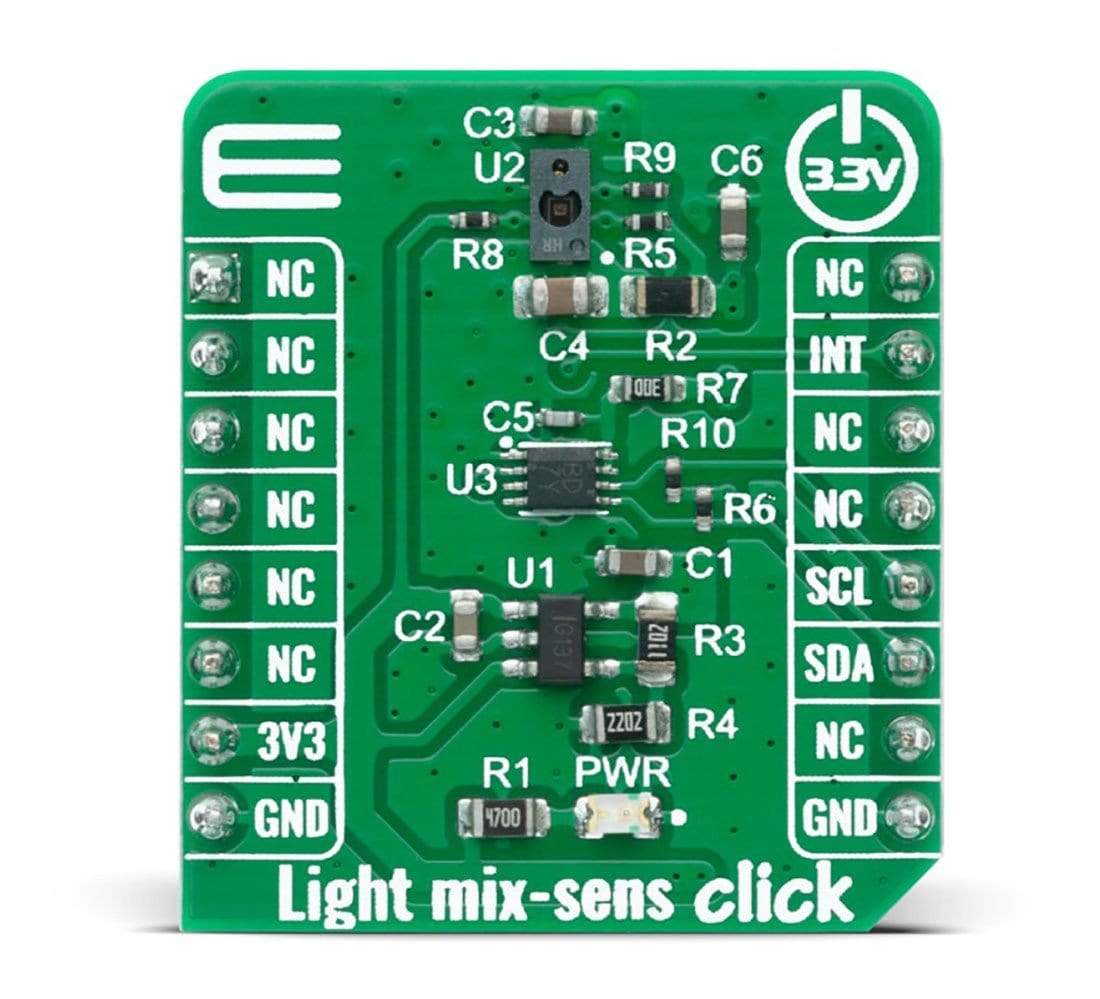
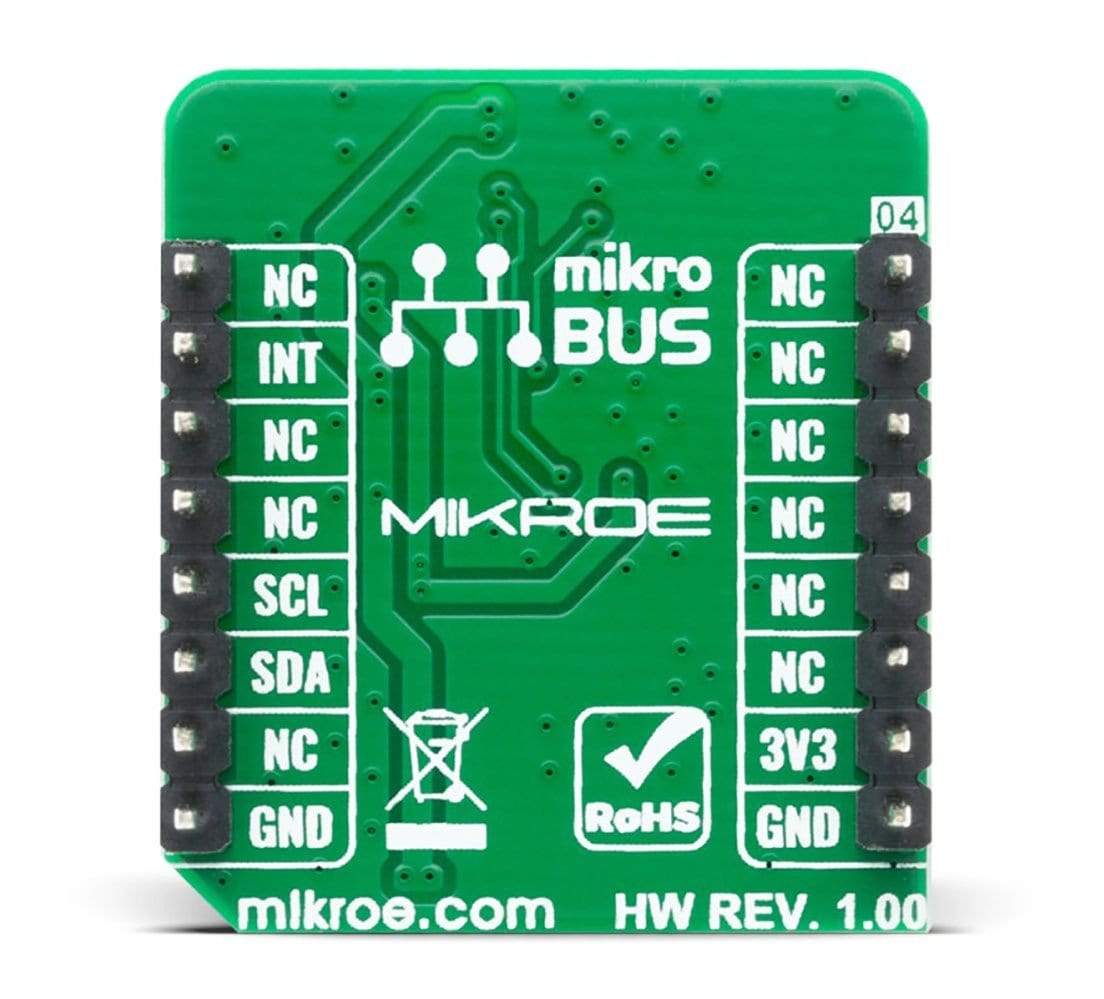
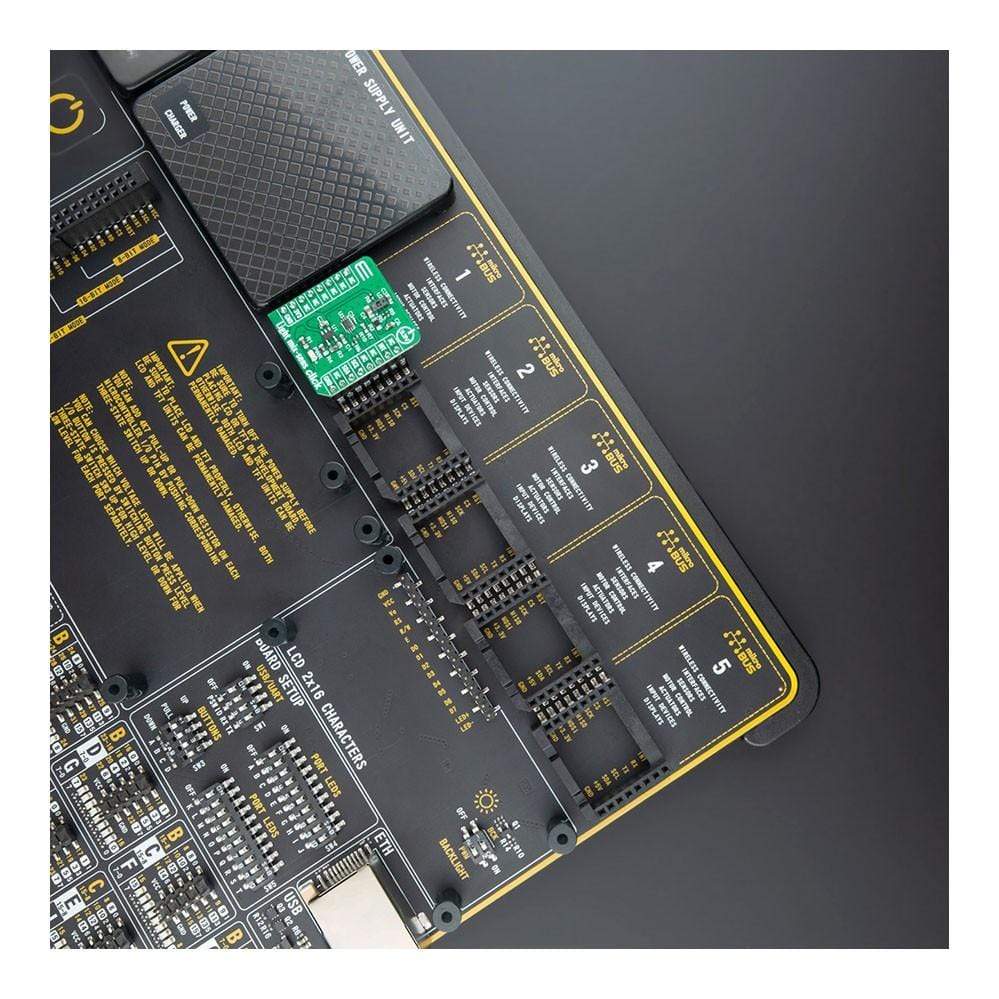
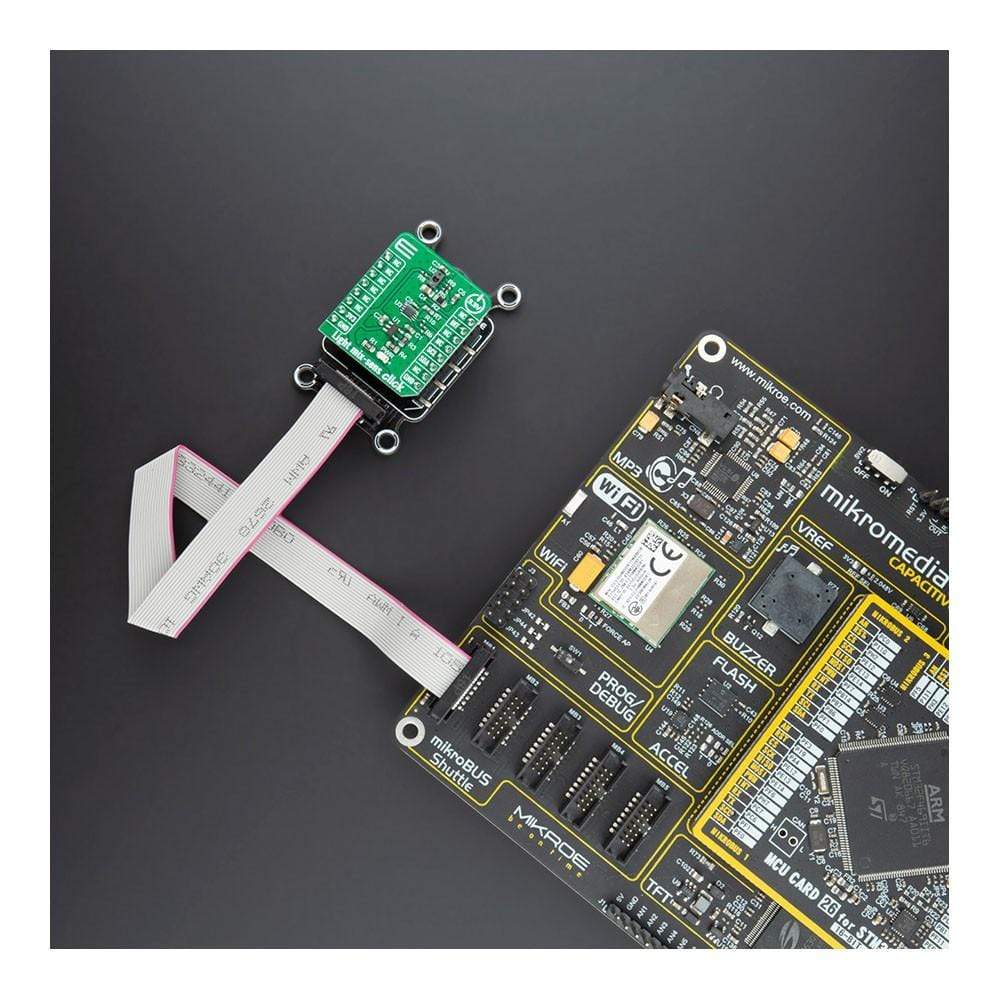
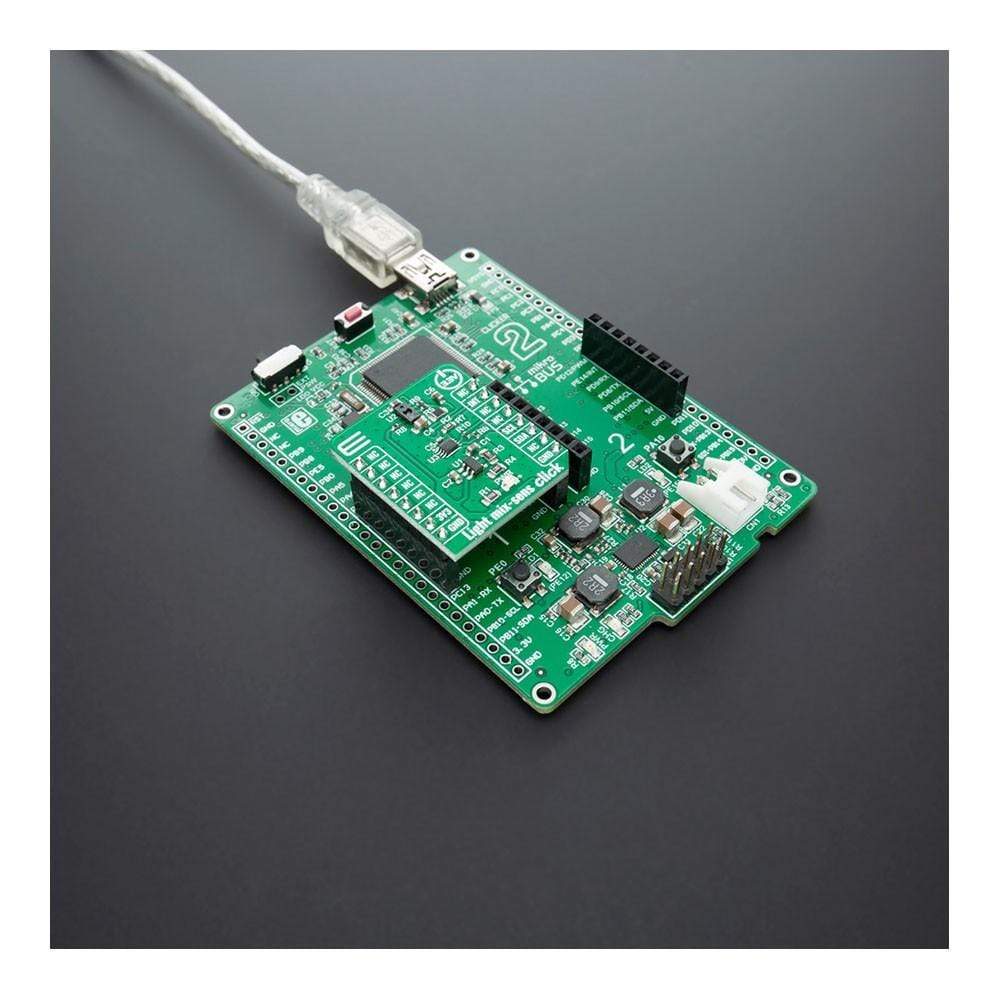
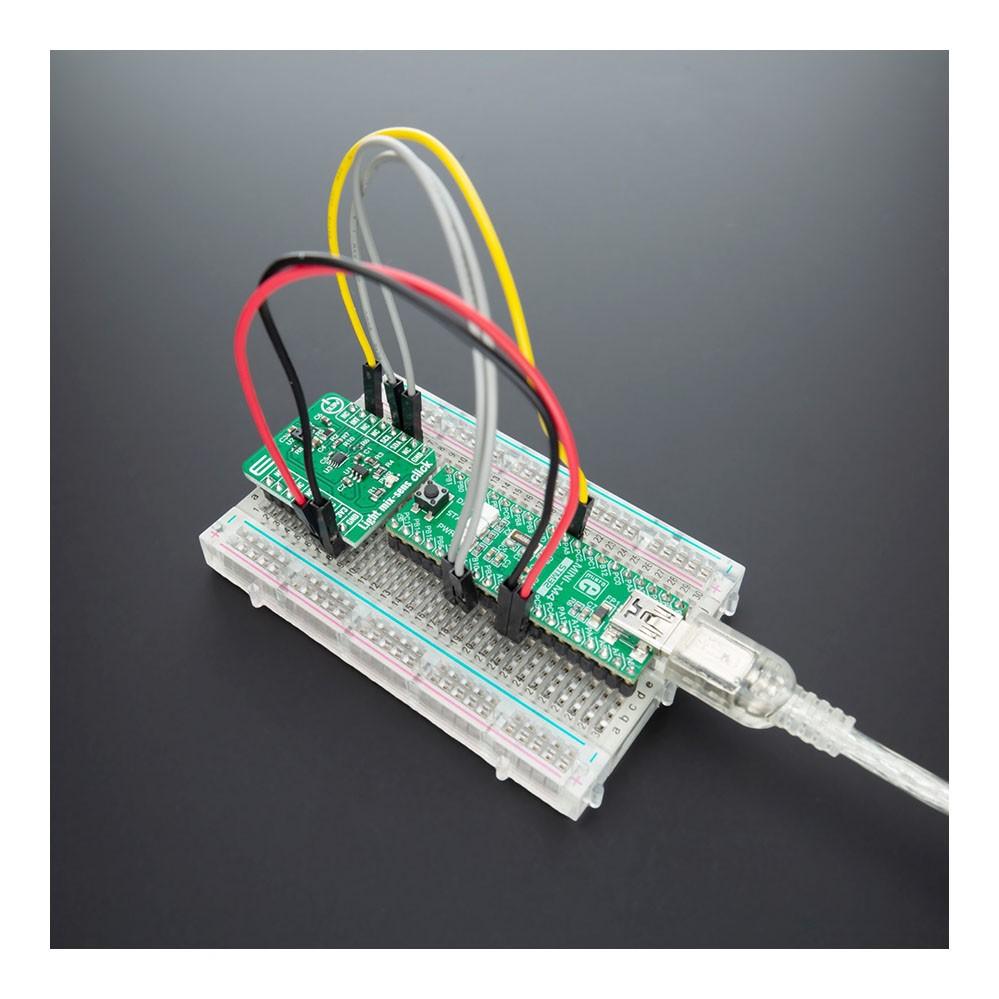
Overview
The Light Mix-Sens Click Board™ is based on the TMD37253, an advanced proximity measurement, colour sense (RGBC+IR), and digital ambient light sensing (ALS) device. The TMD37253 slim module package has been designed to accommodate a “single hole” aperture approach incorporating an IR LED and factory-calibrated LED driver.
The proximity detection feature provides object detection (e.g., mobile device screen to the user’s ear) by photodiode detection of reflected IR energy (sourced by the integrated LED). The ALS detection feature provides photopic light intensity data. The colour photo-diodes have UV and IR blocking filters and dedicated data converters producing 16-bit data. This architecture allows applications to accurately measure ambient light, enabling devices to calculate illuminance and colour temperature to control display backlight and chromaticity.
The Light Mix-Sens Click Board™ is supported by a mikroSDK compliant library, which includes functions that simplify software development. This Click Board™ comes as a thoroughly tested product, ready to be used on a system equipped with the mikroBUS™ socket.
Downloads
How Does The Light Mix-Sens Click Board™ Work?
The Light Mix-Sens Click Board™ features advanced proximity measurement, colour sense (RGBC+IR), and digital ambient light sensing (ALS). The TMD37253 slim module, from AMS, incorporates an IR LED and factory calibrated LED driver. The proximity detection feature provides object detection (e.g. mobile device screen to the user's ear) by photo-diode detection of reflected IR energy (sourced by the integrated LED). Detect/release events are interrupt-driven, and occur when proximity result crosses upper and/or lower threshold settings. The proximity engine features offset adjustment registers to compensate for unwanted IR energy reflection at the sensor. Proximity results are further improved by automatic ambient light subtraction. The ALS detection feature provides photopic light intensity data. The colour photodiodes have UV and IR blocking filters and a dedicated data converters producing 16-bit data. This architecture allows applications to accurately measure ambient light which enables devices to calculate illuminance and colour temperature to control display backlight and chromaticity.

Proximity results are affected by three fundamental factors: the integrated IR LED emission, IR reception, and environmental factors, including target distance and surface reflectivity. The IR reception signal path begins with IR detection from a photodiode and ends with the 8-bit proximity result in the PDATA register. A signal from the photodiode is amplified, and offset adjusted to optimize performance. Offset correction or cross-talk compensation is accomplished by adjustment to the POFFSET register. The analog circuitry of the device applies the offset value as a subtraction to the signal accumulation; therefore a positive offset value has the effect of decreasing the results.
The colour and ALS reception signal path begins as photodiodes receive filtered light and ends with 16-bit results. The IR photodiode primarily used for proximity sensing is multiplexed with the green channel's ADC to measure the IR content of ambient light. The colour photodiodes are filtered with UV and IR filters. The IR photodiode is filtered to receive only IR. A signal from the RGBC photodiodes simultaneously accumulate for a period of time set by the value in ATIME before the results are available. Measurement of IR must be done in a separate integration because it shares the ADC with the green photodiode. Gain is adjustable from 1x to 128 x to facilitate the operation over a wide range of lighting conditions. Custom LUX equations are used to calculate the amount of ambient light, color temperature, as well as, determine the light type (e.g. LED, fluorescent, incandescent, etc.) using the ALS results.
The TMD37253 module operates at 1.8V power supply with 1.8V I2C bus for reduced power consumption. For integration on mikroBUS, complete voltage regulation and logic level translation has been implemented. Therefore, the Light Mix-Sens Click Board™ is designed to be operated only with a 3.3V logic level. A proper logic voltage level conversion should be performed before the Click Board™ is used with MCUs with logic levels of 5V.
SPECIFICATIONS
| Type | Optical |
| Applications | The Light Mix-Sens Click Board™ can be used for ambient light sensing, single hole proximity sensing, mobile phone touch screen disable, colour temperature sensing to assist backlight, camera, and flash control. |
| On-board modules | The Light Mix-Sens Click Board™ uses the TMD37253 IC, an advanced proximity measurement, color sense (RGBC+IR), and digital ambient light sensing (ALS) device, from AMS. |
| Key Features | Accurate colour temperature and ambient light sensing, UV / IR blocking filters, 46° Average FOV, Photopic ambient light sensing (ALS), Programmable gain and integration time, Reduced power consumption. |
| Interface | I2C |
| Compatibility | mikroBUS |
| Click Board™ size | S (28.6 x 25.4 mm) |
| Input Voltage | 3.3V |
PINOUT DIAGRAM
This table shows how the pinout on the Light Mix-Sens Click Board™ corresponds to the pinout on the mikroBUS socket (the latter shown in the two middle columns).
| Notes | Pin |  |
Pin | Notes | |||
|---|---|---|---|---|---|---|---|
| NC | 1 | AN | PWM | 16 | NC | ||
| NC | 2 | RST | INT | 15 | INT | Interrupt | |
| NC | 3 | CS | RX | 14 | NC | ||
| NC | 4 | SCK | TX | 13 | NC | ||
| NC | 5 | MISO | SCL | 12 | SCL | I2C Clock | |
| NC | 6 | MOSI | SDA | 11 | SDA | I2C Data | |
| Power Supply | 3.3V | 7 | 3.3V | 5V | 10 | NC | |
| Ground | GND | 8 | GND | GND | 9 | GND | Ground |
ONBOARD SETTINGS AND INDICATORS
| Label | Name | Default | Description |
|---|---|---|---|
| LD1 | PWR | - | Power LED Indicator |
| General Information | |
|---|---|
Part Number (SKU) |
MIKROE-4148
|
Manufacturer |
|
| Physical and Mechanical | |
Weight |
0.015 kg
|
| Other | |
Country of Origin |
|
HS Code Customs Tariff code
|
|
EAN |
8606018717927
|
Warranty |
|
Frequently Asked Questions
Have a Question?
Be the first to ask a question about this.

